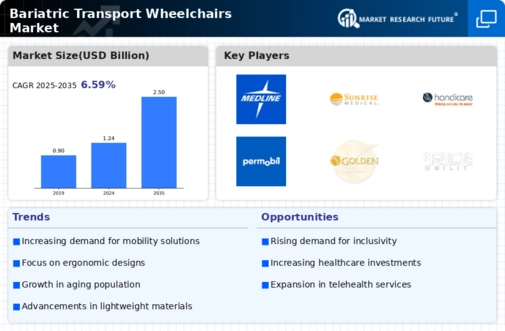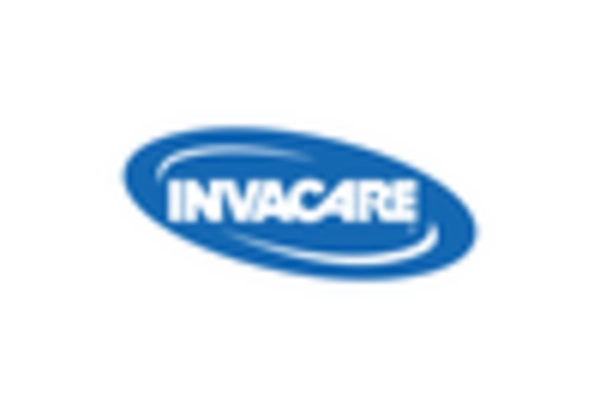Bariatric Transport Wheelchairs Market Summary
As per MRFR analysis, the Bariatric Transport Wheelchairs Market Size was estimated at 1.236 USD Billion in 2024. The Bariatric Transport Wheelchairs industry is projected to grow from 1.318 USD Billion in 2025 to 2.495 USD Billion by 2035, exhibiting a compound annual growth rate (CAGR) of 6.59 during the forecast period 2025 - 2035.
Key Market Trends & Highlights
The Bariatric Transport Wheelchairs Market is experiencing a dynamic shift towards customization and technological innovation.
- The demand for customization in bariatric transport wheelchairs is rising, reflecting a broader trend towards personalized healthcare solutions.
- Technological advancements are enhancing the functionality and safety features of bariatric transport wheelchairs, appealing to both users and healthcare providers.
- North America remains the largest market, while the Asia-Pacific region is emerging as the fastest-growing area for bariatric transport wheelchairs.
- The increasing obesity rates and aging population are driving market growth, alongside a heightened awareness of patient safety in healthcare facilities.
Market Size & Forecast
| 2024 Market Size | 1.236 (USD Billion) |
| 2035 Market Size | 2.495 (USD Billion) |
| CAGR (2025 - 2035) | 6.59% |
Major Players
Invacare Corporation (US), Drive Medical (US), Medline Industries, Inc. (US), Karman Healthcare (US), Sunrise Medical (US), Graham-Field Health Products, Inc. (US), Pride Mobility Products Corp. (US), Nova Medical Products (US)


















Leave a Comment